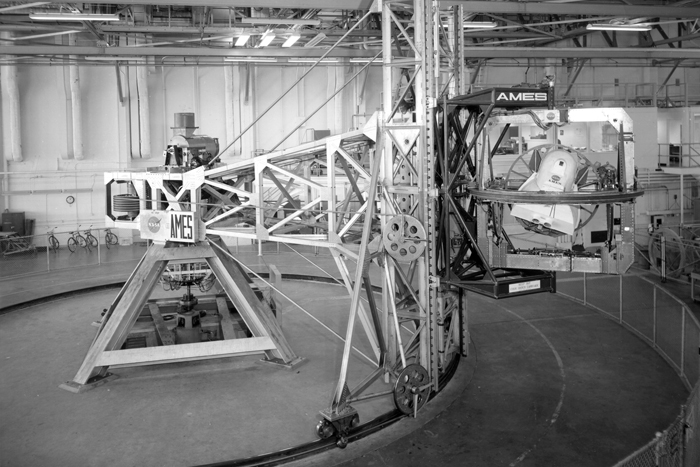Space History Photo: Ames 5 Degrees-of-Motion Simulator

In this historical photo from the U.S. space agency, the NASA Ames 5 degrees-of-freedom motion simulator is shown on June 6, 1962. This simulator incorporated a centrifuge with a 30 foot spin radius. The simulated cockpit located within the hooded cab at the end of the centrifuge arm was driven by motors as required by the simulation about each of its three axes (pitch, roll, and yaw).
The cab was also driven through a limited range of motion along the vertical axis and of course was driven by the centrifuge arm along a curved path of fixed radius in the horizontal plane. Thus the motions that could be simulated in the cab were three angular motions, one translational motion, and a curvilinear combination of the remaining two translational motions. The curvilinear motions and associated accelerations were of course, fairly representative of airplane flight. The simulator was placed in operation early in 1961.
Each weekday, SPACE.com looks back at the history of spaceflight through photos (archive).
Get the Space.com Newsletter
Breaking space news, the latest updates on rocket launches, skywatching events and more!
Join our Space Forums to keep talking space on the latest missions, night sky and more! And if you have a news tip, correction or comment, let us know at: community@space.com.

The National Aeronautics and Space Administration (NASA) is the U.S. government agency in charge of the civilian space program as well as aeronautics and aerospace research. Founded in 1958, NASA is a civilian space agency aimed at exploring the universe with space telescopes, satellites, robotic spacecraft, astronauts and more. The space agency has 10 major centers based across the U.S. and launches robotic and crewed missions from the Kennedy Space Center in Cape Canaveral Florida. It's astronaut corps is based at the Johnson Space Center in Houston. To follow NASA's latest mission, follow the space agency on Twitter or any other social channel, of visit: nasa.gov.









